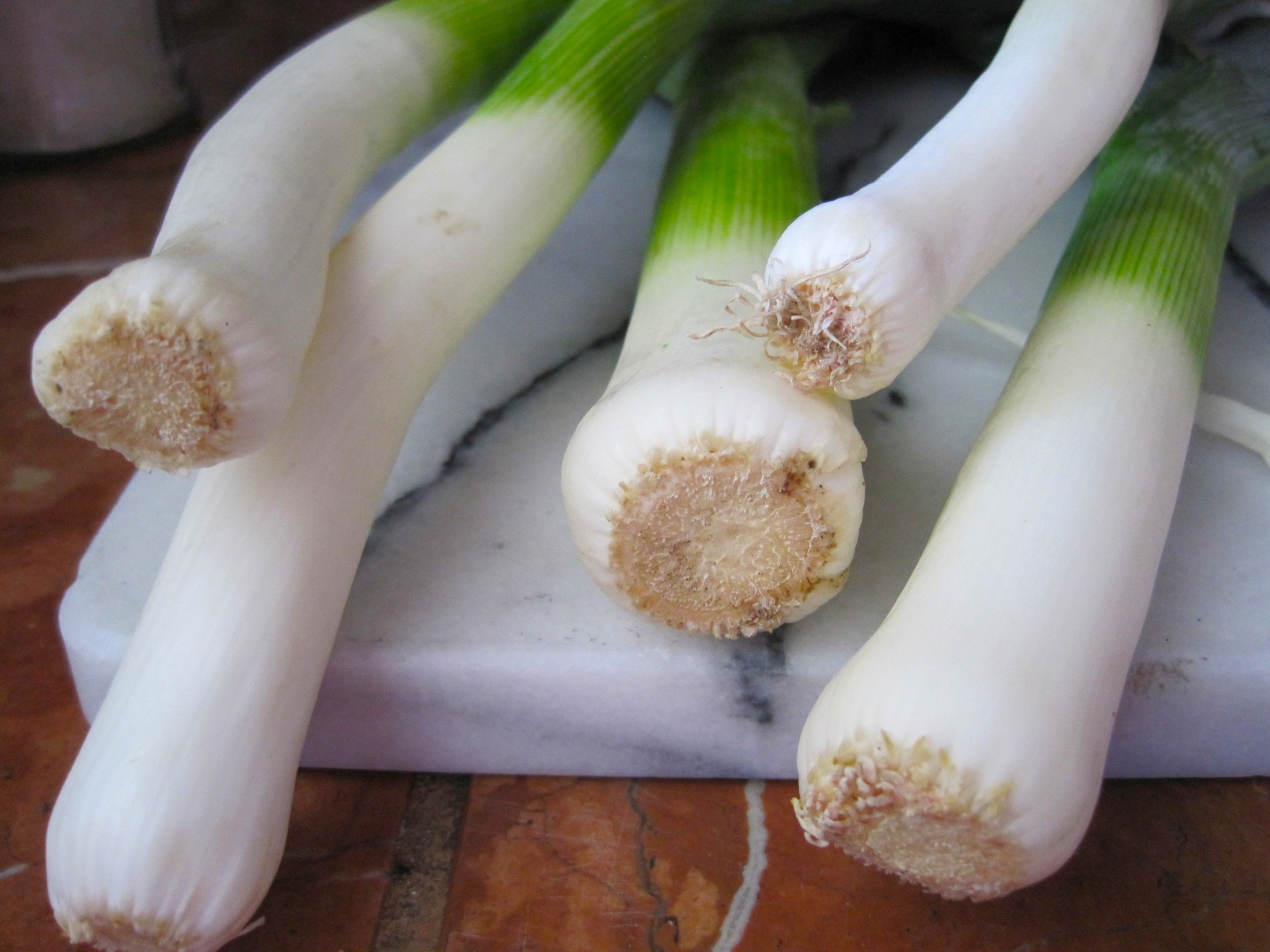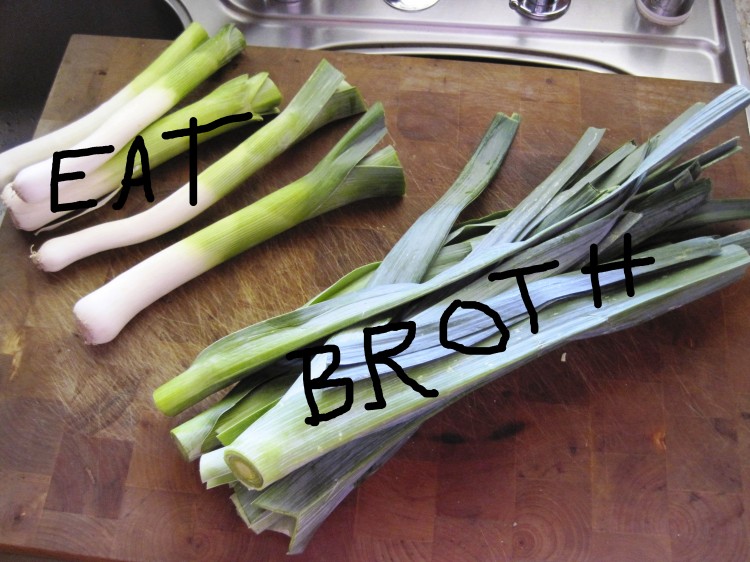
Remember when I made the leek and feta scramble in installment 2 of this series? I was then left with tough leek ends.
I used those ends today to make a soup with potatoes and ham.
Not so sexy, I know.
I promised I’d keep you informed about how I incorporate my biweekly CSA box from Albert & Eve into my life. I think it’s helpful to have the whole story, not just cherry-picked recipes and photos of the beautiful stuff. For every lovely dish of rainbow carrots or braised artichokes you put out out you’re going to have to figure out what to do with a whole mess of green onions. Or trimmings.
While not every dish can be mind-blowing, they can all be tasty, even when they’re frugal,
and frugality is a must with a CSA box or you’ll wind up with some of it in the recycle bin.
The possibly of that makes me nuts.
Take the artichokes, for example.
I’m constantly thinking about them — even though I have a master plan. They’ve been sitting in the fridge for over a week now, wrapped in damp paper towels to keep them lively.
Pending some kind of major problem, I’ll be getting another three artichokes in my next box. I want to make all of them at the same time rather than just the three I received in my first box. You see, I have four people. There will be a general outcry if I come out with less than one per head.
Back to the leek ends and leek broth.
Leek broth is great for soups that benefit from mild oniony flavor. Potato soup works especially well.
If you have a bunch of leek ends, a few big potatoes and some leftover ham or pork you’re in business. You won’t end up with a pretty, fancy-pants soup, but it’ll be plenty comforting.
This is why I’m always throwing odd little bags of leftover meat in the freezer and why you should, too. Raw or cooked — doesn’t matter.
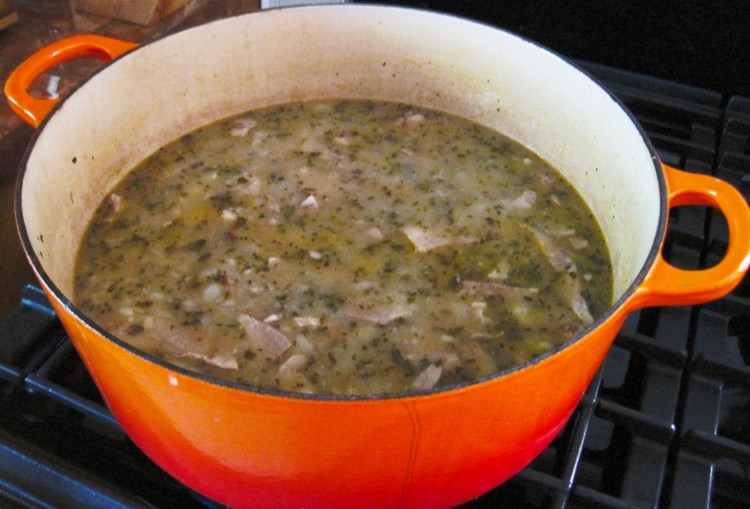
The soup in the photo has some green flecks in it because I tossed in the leftover bohr kale tapenade from installment 5. Why not? The tapenade has a complementary flavor profile, and leek and kale go very well together.
Here, then, are the instructions for this frugal soup.
- Dark green ends of 7 or 8 leeks, rinsed and chopped into 1-inch pieces
- 8 cups water
- 3 large Russet potatoes, peeled and cubed
- Kosher salt
- Freshly ground black pepper
- Leftover cooked roast pork, cubed, shredded or sliced, as desired. You can use ham, if that's what you have, or even chicken. Leftover chicken thigh meat works very well. Keep the pieces small so they heat through fairly quickly.
- Place leeks in pot large enough to make soup and cover with the water.
- Bring to a boil and then simmer for about 30 minutes.
- Strain broth and return to pot, discarding leek pieces.
- Add potatoes.
- Remove enough broth so that the potatoes are just covered. If you don't have enough broth, add a little water. It all depends upon the size of the potatoes you used.
- Add salt & pepper. If the pork you are using for this dish is salty, then keep that in mind when you add salt at this step.
- Bring to a boil.
- Simmer until potatoes are just about done.
- Add pork and bring back to a simmer.
- Cook until potatoes are done.
- Stamp potatoes with a potato masher, or end of a wire whisk, so that you wind up with a thick, chunky soup.
- Adjust seasonings.


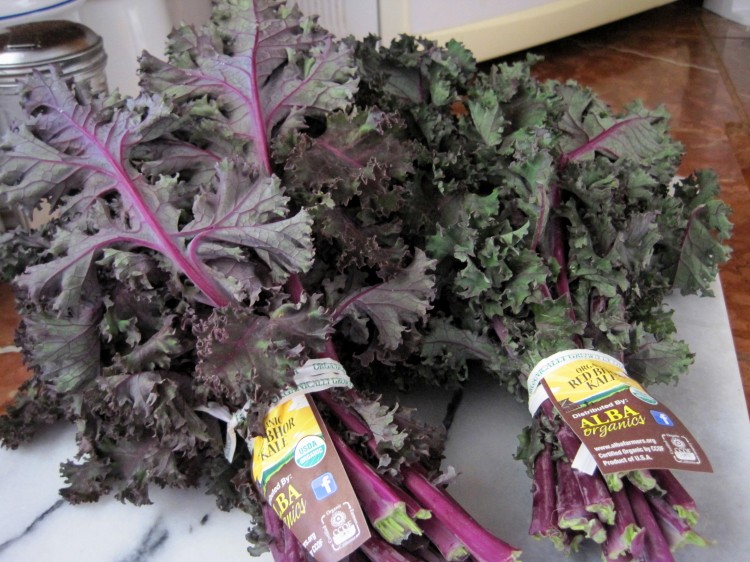
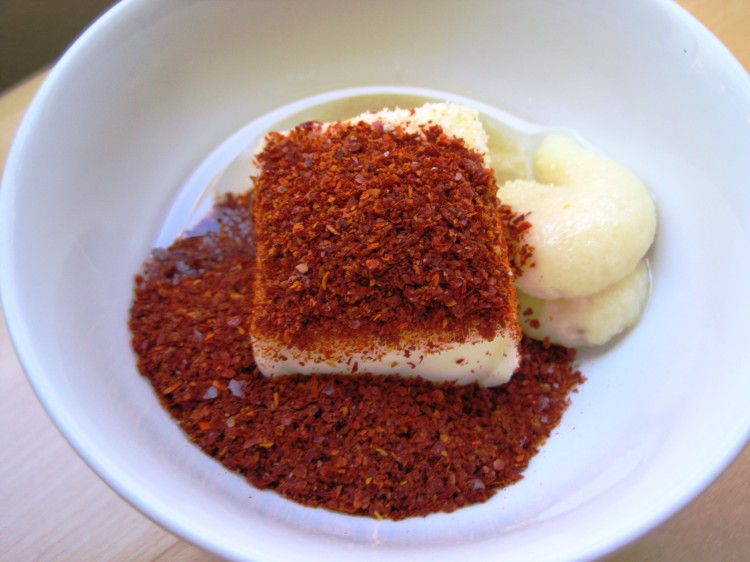
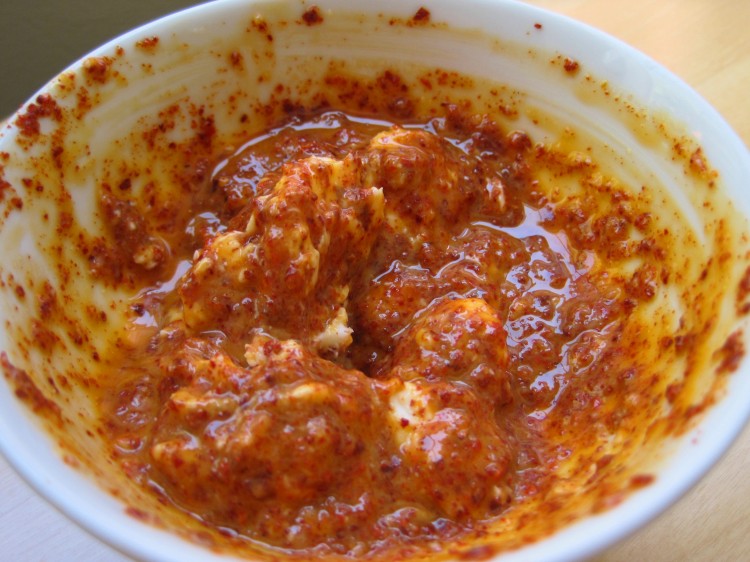
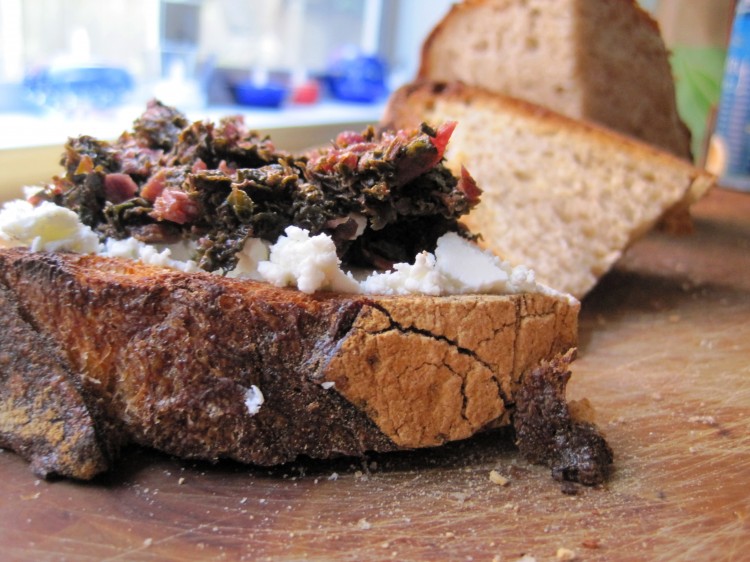
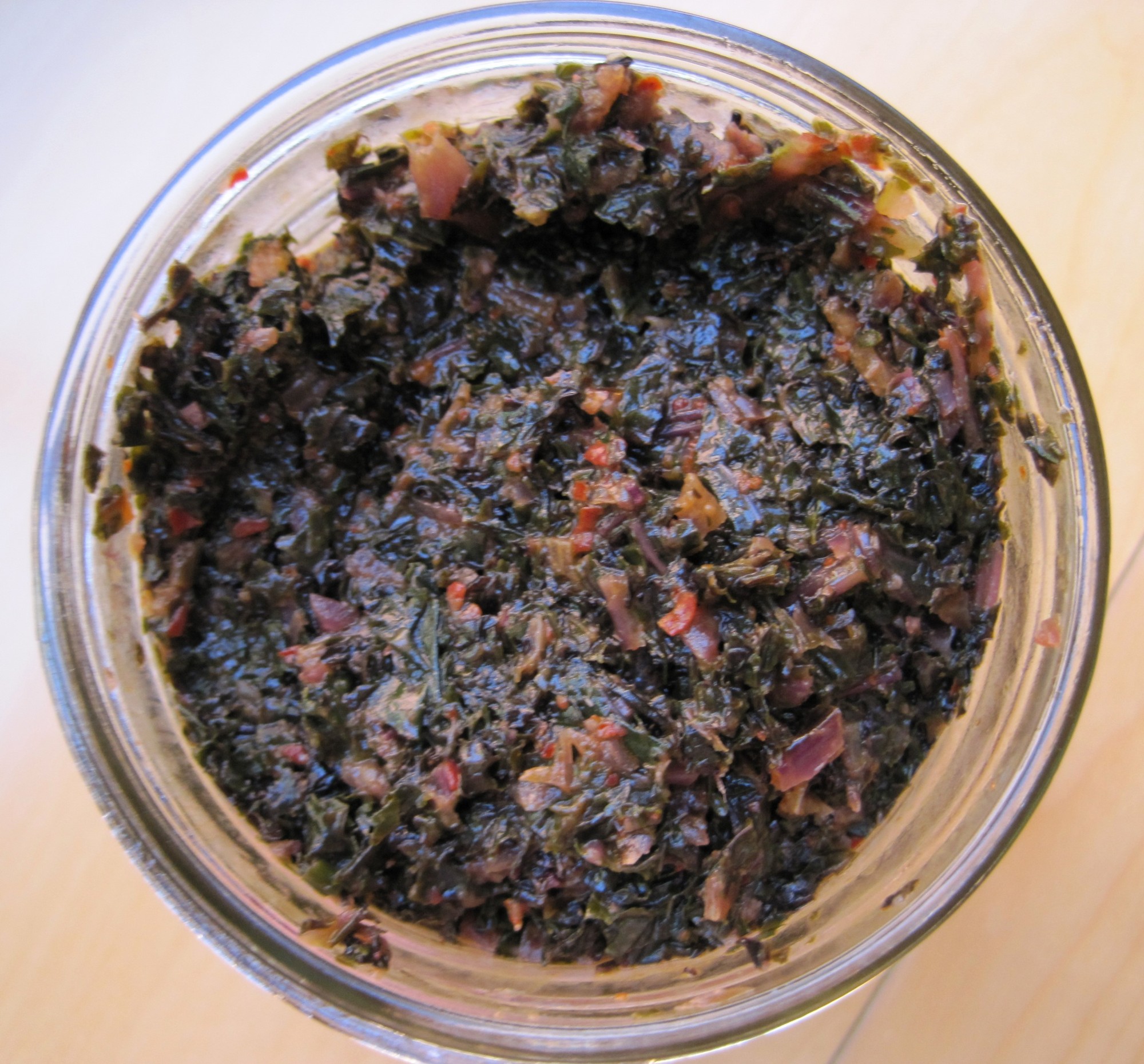

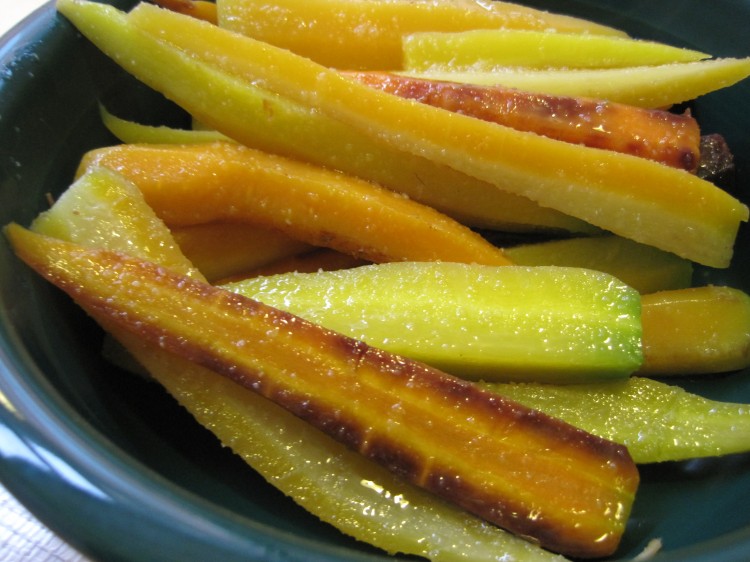
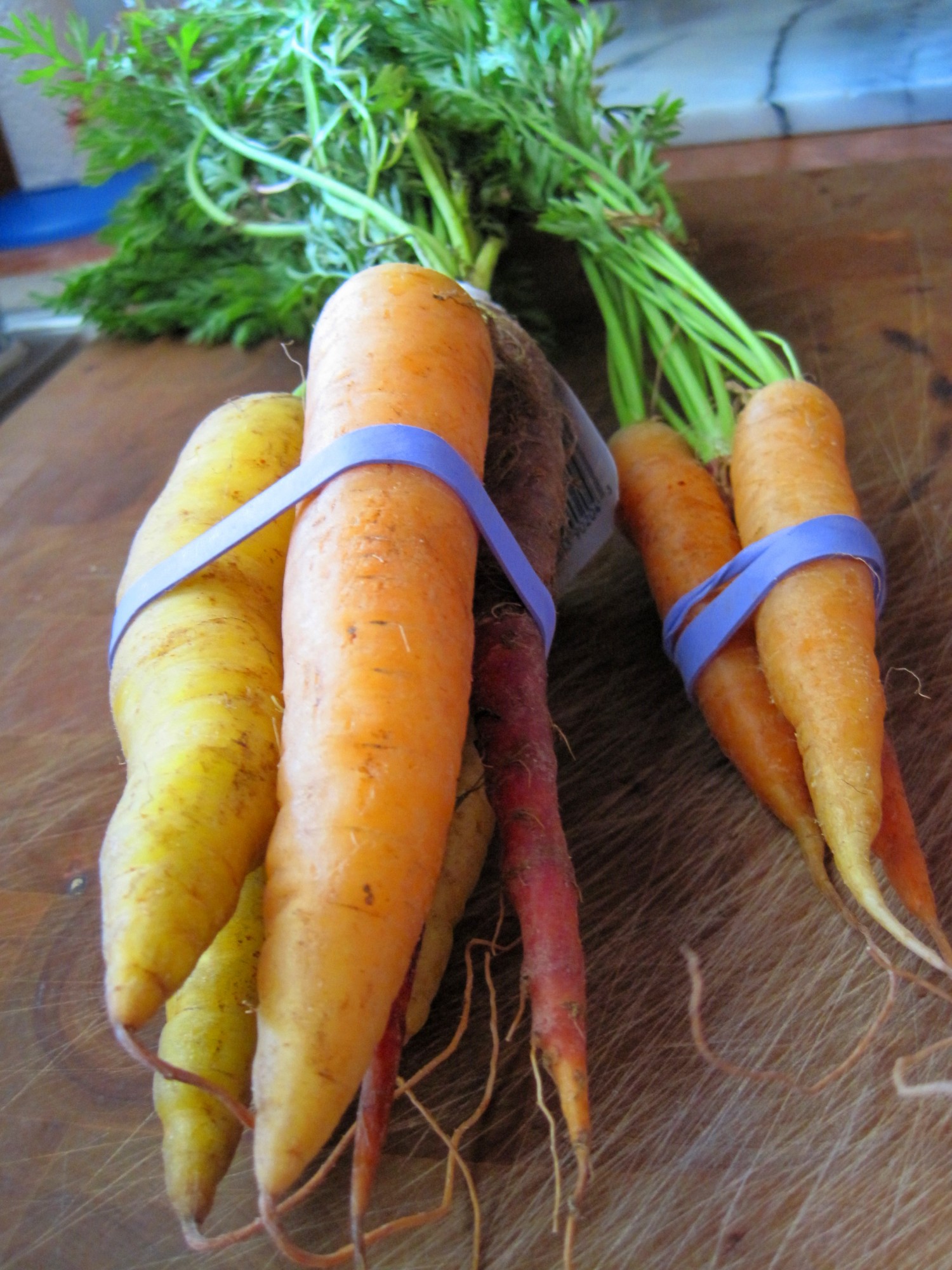
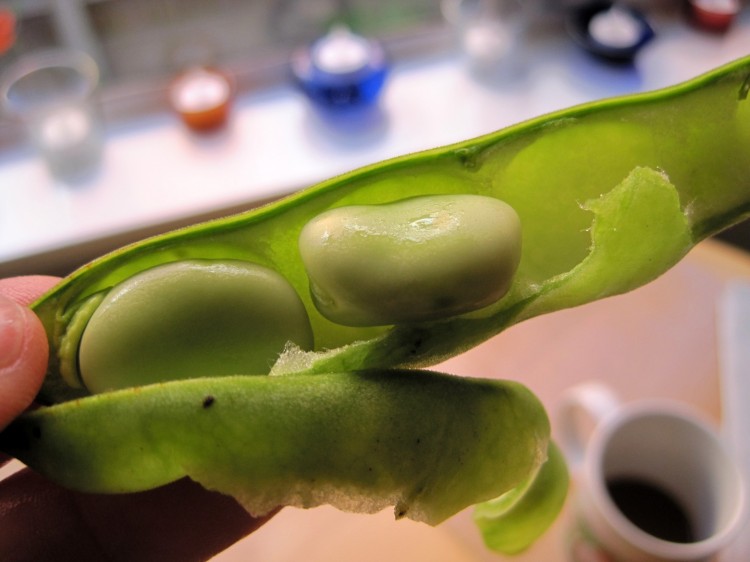
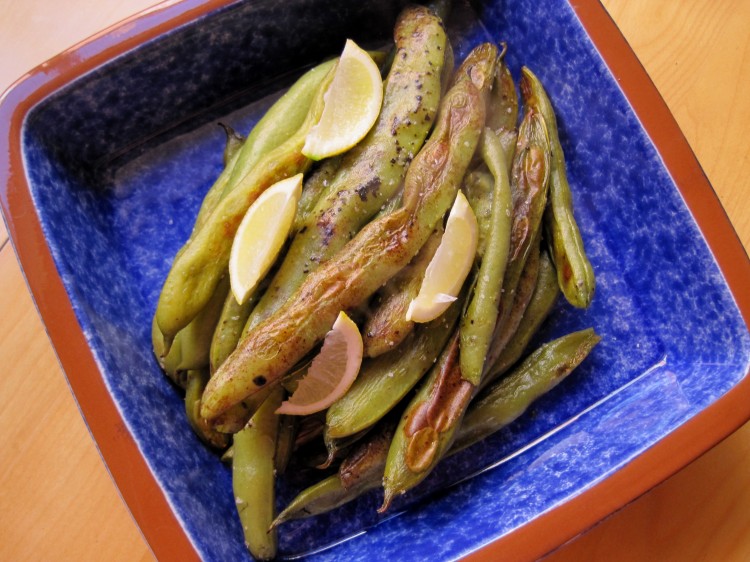
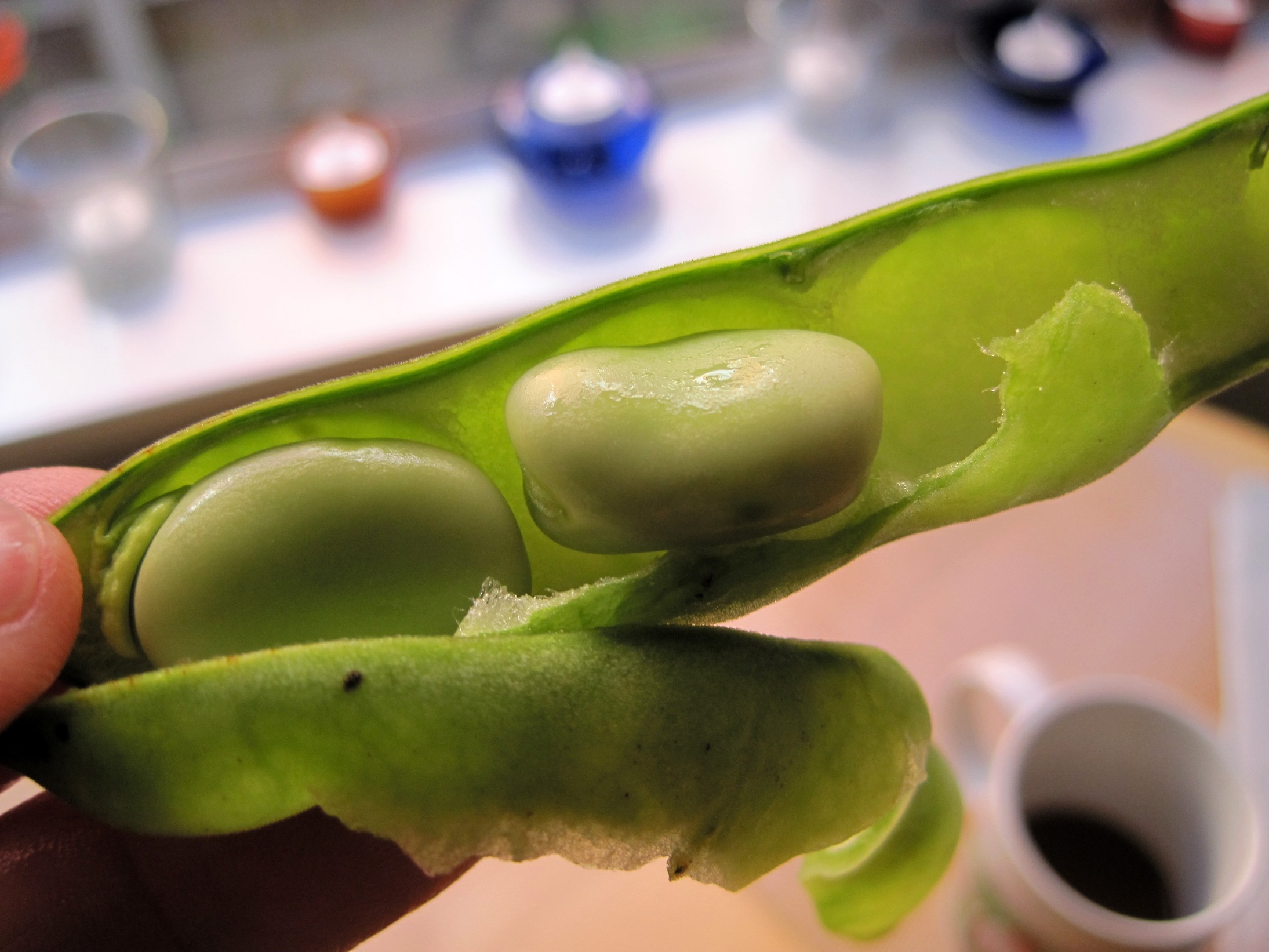
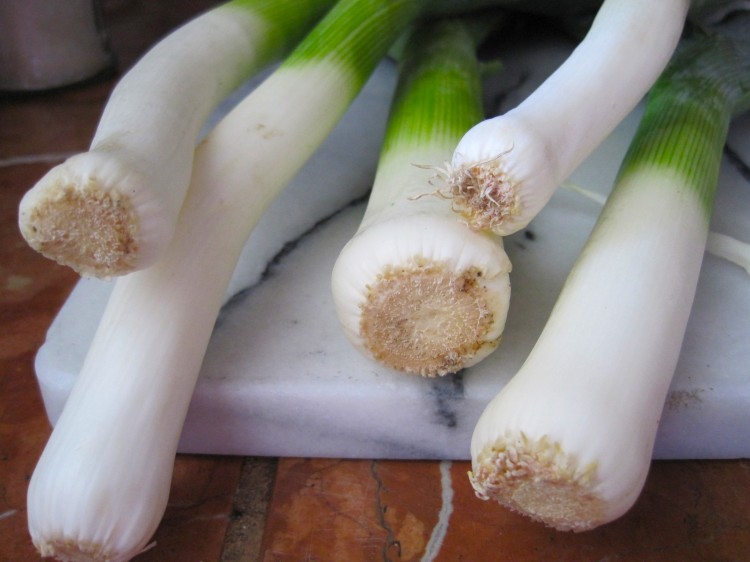
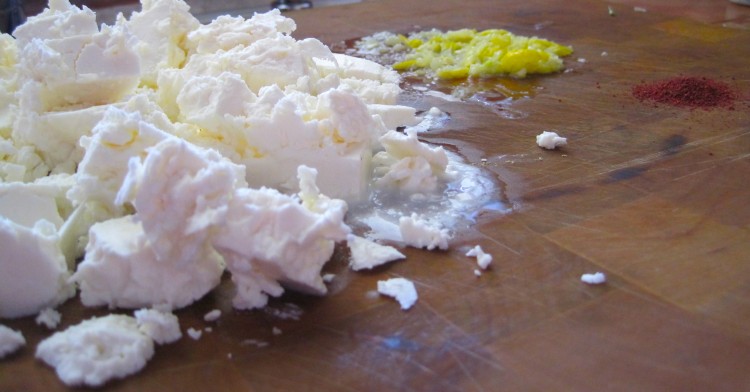
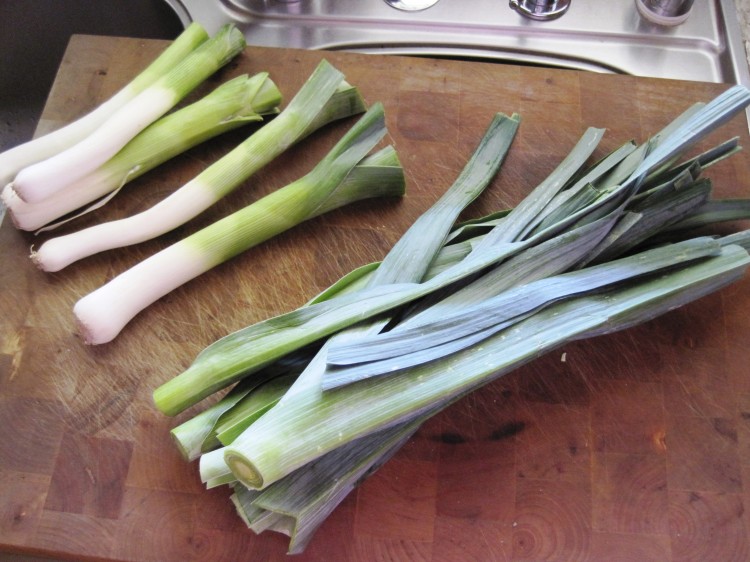
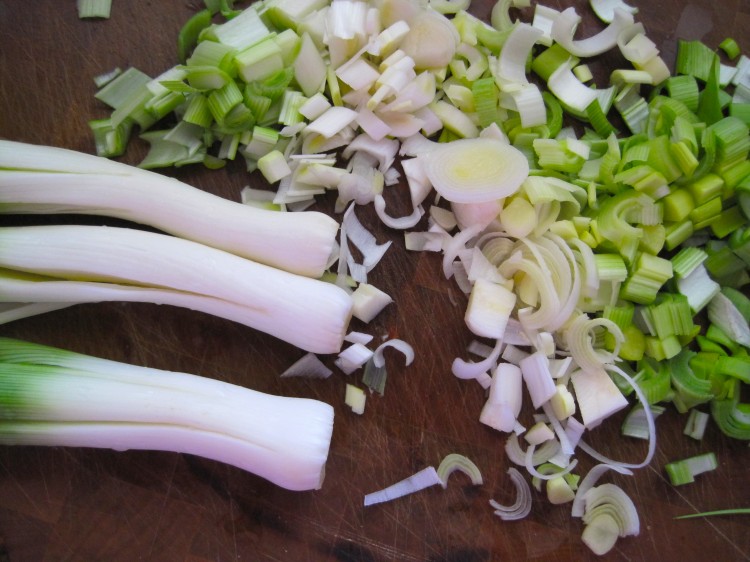
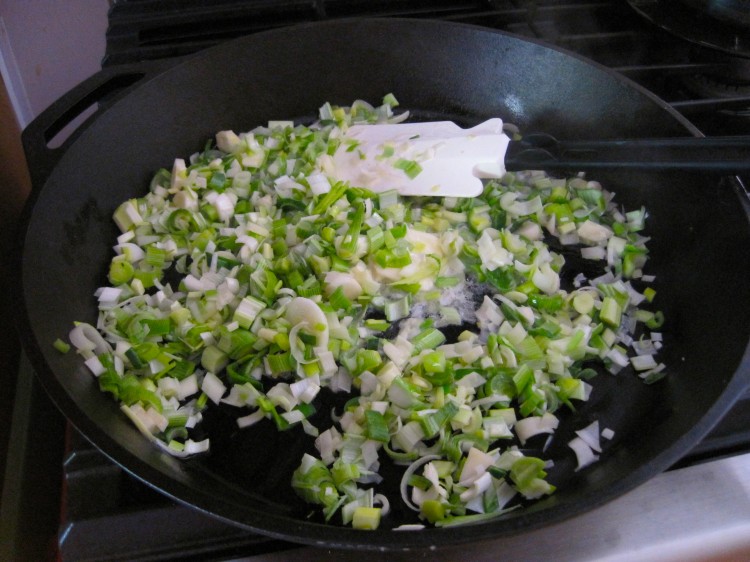
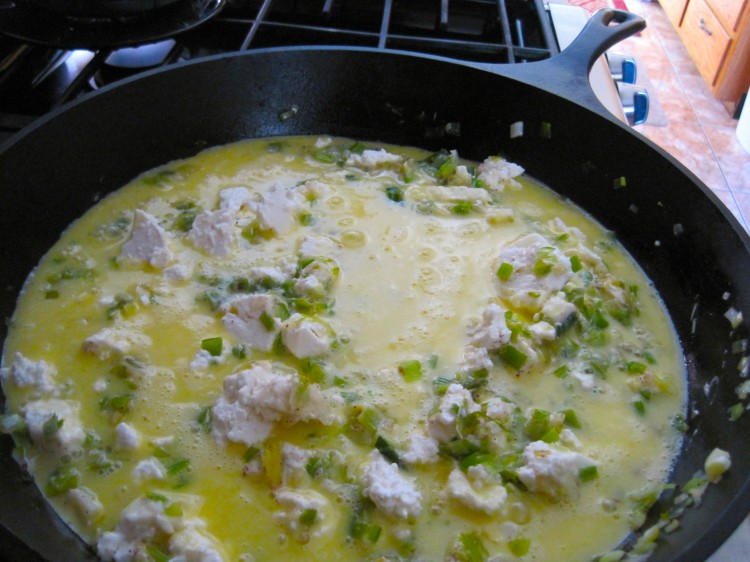 We were so happy about the soft, mildly-oniony scramble that I neglected to photograph the finished product — which we consumed with a side of good toasted bread, which is all you need. The addition of the sumac and lemon added a whisper of citrusy tartness to the salty, creamy, funky feta backbone.
We were so happy about the soft, mildly-oniony scramble that I neglected to photograph the finished product — which we consumed with a side of good toasted bread, which is all you need. The addition of the sumac and lemon added a whisper of citrusy tartness to the salty, creamy, funky feta backbone.